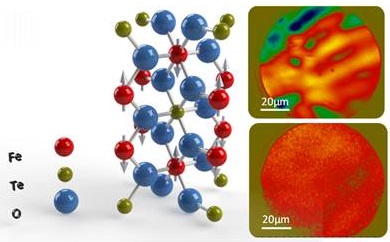Roughness insensitive boundary magnetization is a new concept discovered by Nebraska MRSEC researchers. It is a unique feature of magnetoelectric antiferromagnets, i.e. materials in which the application of electric field induces a net magnetic moment. An important property of the boundary magnetization is that it can be switched between two states by applying an electrical voltage. This property can be used in nanoelectronic devices, such as low power magnetic random access memories and spin-based field effect transistors. Although the boundary magnetization is predicted to be a generic property of any magnetoelectric antiferromagnet, its experimental evidence is scarce and has only been provided for the Cr2O3 surface. To bring the concept of voltage-controlled boundary magnetization into a broader context, Nebraska MRSEC researchers explored magnetoelectric Fe2TeO6and showed the evidence of surface magnetization that can be controlled by applied voltage. They fabricated this oxide material for the first time as highly textured thin films using pulsed laser deposition methodology. X-ray magnetic circular dichroism – photoemission electron microscopy (XMCD-PEEM) confirmed that am antiferromagnetic multi-domain state can be brought into an antiferromagnetic single domain state with voltage-controlled boundary magnetization. The finding establishes magnetoelectric antiferromagnets as a broader class of materials with significant implications for voltage-controlled spintronics.

Atomic and spin structure of the magnetoelectric antiferromagnet Fe2TeO6 (left) and XMCD-PEEM image of antiferromagnetic Fe2TeO6 in an multidomain state (top) and a single-domain state (bottom), showing that local boundary magnetization can be controlled by voltage.